Winter Wonderland and Beyond: The Ultimate Sapporo Experience
Welcome to Sapporo, a northern paradise that many consider to be the most attractive city in Japan. Find out what to do in Sapporo and how to make the most of your stay.
Introduction: Discovering Sapporo's Charm
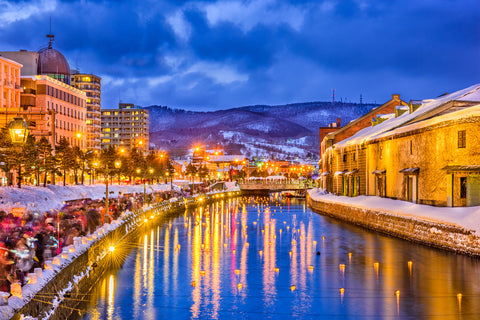
Sapporo is the largest city on the island of Hokkaido and anywhere north of Tokyo. It’s name comes from the Ainu term sat poro pet, which translates to “dry, great river.” This is a reference to the Toyohira River, the main source of natural water in the city. Sapporo is a compact city that offers a unique blend of natural beauty and urban sophistication, making it one of the most livable cities in Japan. The city boasts a vast transportation network, international-standard education, busy shopping districts, and several cultural landmarks. Sapporo also has world-class sporting facilities and hosted the 1972 Winter Olympics.
The Ainu were the earliest settlers in the region now known as Sapporo. The Meiji government began developing the city in 1868, and Sapporo was born. It soon became an administrative center for Hokkaido, prompting large-scale construction work to enlarge the city. Its streets followed a strict grid plan, a rectangular system of city blocks made by placing streets at right angles to one another. Today, the city maintains its rich cultural heritage. Fresh seafood, ramen, dairy products, beer, and the annual winter festival are only a few of the major Sapporo attractions. Join us as we take a peek into life in the area.
Sapporo Snow Festival: A Spectacular Winter Highlight

The city welcomes one of its biggest influxes of tourists from around the globe in February, thanks to one special event: the Sapporo Snow Festival. This festival is held in February each year. It lasts for seven days but doesn’t have a specific start date. However, you can be fairly certain that it will take place at three popular venues: Odori Park, Tsudome, and Susukino.

The first snow festival in Sapporo was in 1950, when a group of high schoolers built six snow statues at Odori Park. More than seven decades later, today, the Sapporo Snow Festival is world-renowned for the hundreds of massive ice sculptures on display. Millions of people gather at the three sites to observe the spectacular show. The largest sculpture at the event was 25 meters tall and named 'Gulliver, Welcome to Sapporo.' Attendees of the festival also enjoy live concerts and other performances. Each festival site has its own unique characteristics, which can affect the experience you get at the event. Let’s take a quick look at them:
-
Odori Park: The typical spot to find the largest ice sculptures at the festival. Some are large enough to function as stages. This site also houses an observatory in the Sapporo TV Tower. Enjoy lit-up sculptures until 10:00 PM.
-
Tsudome: The best spot for family activities during the festival. Aside from sculptures, it has snow slides and rafting. The site closes by 4:00 PM, so there are no lit-up sculptures.
-
Susukino: Well-balanced location with hundreds of snow sculptures on display. Enjoy lit-up sculptures until 11:00 PM (10:00 PM on the last day of the festival).
Of the three festival sites, Odori Park is the most common because of its facilities and cultural significance.
Odori Park: The Green Heart of Sapporo
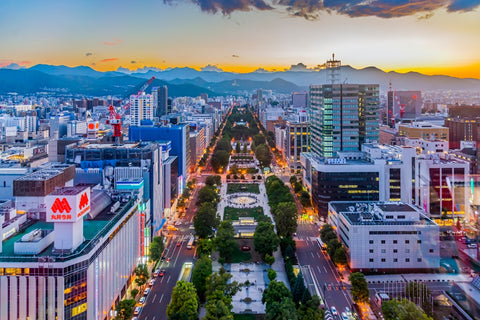
Approximately 10.5 km long, Odori Park is really more of a street than an actual park. Even the term Odori means “large street” in English. The “park” runs through the center of Sapporo, separating its northern and southern parts.
Odori Park is a popular place for locals and tourists to take leisurely walks. It provides some stunning seasonal views of luscious green lawns and powerful fountains. The park becomes the most serene and relaxing place in Sapporo when it’s not hosting any of the many seasonal events.
In 1871, the location was developed as a firebreak called Kabo-sen. It was later renamed Shiribeshi Dori. However, the name didn’t take hold among the locals, so in 1881, it was renamed Odori. Today, Odori Park hosts some of the biggest seasonal events in the city, including the Sapporo Snow Festival (winter), the Autumn Festival (fall), the YOSAKOI Festival (summer), and the Lilac Festival (spring).
Historic Village of Hokkaido: A Journey Through Time
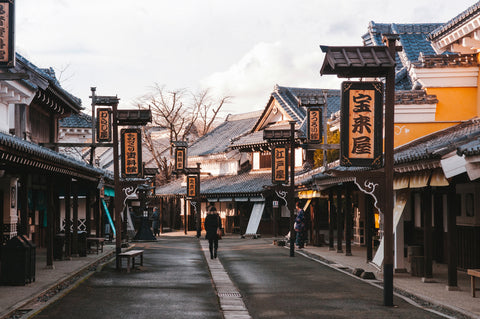
Also known as Kaitaku no mura, the Historic Village of Hokkaido is an open-air museum showcasing the island's pioneering history through well-preserved buildings and exhibits. The village consists of 52 buildings from the era of Hokkaido’s large-scale development (1868–1926) and provides experiences of Japan’s Meiji and Taisho periods. Please note that some of the buildings and structures are replicas. Established in 1983, the museum is currently divided into the four sections below:
-
Town: made up of 31 buildings, including the Sapporo Station, several historic offices, business buildings, and educational facilities.
-
Fishing Village: consists of 4 buildings, which are two storehouses and two fishing family houses.
-
Farm Village: contains 14 buildings, including stourhouses, farming facilities, and a relay station.
-
Mountain Village: consists of 3 buildings, which are a lumber shed, charcoal shed, and logging house.
The Historic Village of Hokkaido is mostly open from 9:00 AM. However, the closing time varies: 5:00 PM from May to September and 4:30 PM (with Mondays closed) from October to April.
Sapporo Beer Museum: Cheers to History

In 2004, Sapporo Beer Museum was registered as a Hokkaidō Heritage Site. If you’re wondering why a museum that showcases beer should be taken so seriously, you need to understand the history of beer in Japan. A British trading ship introduced beer to Japan for the first time in 1613. In 1853, Kawamoto Komin, a scholar, became the first person to test-brew beer in the country. The late 1800s saw several breweries established all over Japan, including Sapporo, one of the largest at the time. During the Taisho Period, Japan became one of the biggest exporters of beer to Germany and other countries because of the impact of World War I.
Opened in 1987, the Sapporo Beer Museum is the only museum dedicated to beer in Japan. It explores Sapporo’s history as a brewery and offers guests insights into the process of making famous indigenous brews. A tour in the Star Hall will allow you to pay-taste a variety of brews, such as Kaitakushi Beer, Sapporo Draft Beer Kuro Label, and Hokkaido exclusive. The hall also offers non-alcoholic beer, soft drinks, and a tasting set. There’s a shop in the museum where you can buy beer, souvenirs, merchandise, and snacks. If you’re visiting the museum, remember to check its website for rules and regulations.
Mount Moiwa: Panoramic Views of Sapporo
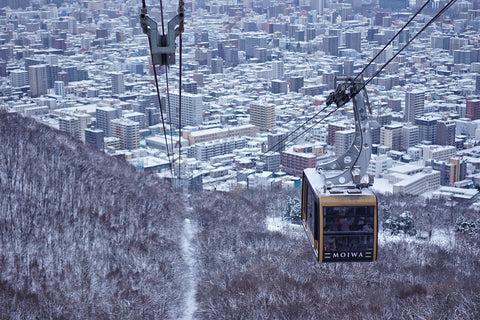
Southwest of central Sapporo and a few miles away from downtown Sapporo lies Mount Moiwa. You can get there easily by walking or taking a bus from the Ropeway Iriguchi station. Mount Moiwa is a popular tourist attraction in the city because of the observation deck located at its 531-meter-high summit. From up there, you can enjoy a panoramic view of Ishikari Bay and the rest of Sapporo, which is especially breathtaking at night.
Connected to the summit is a mini cable car. It takes passengers to and from the Mount Moiwa Ropeway, which is connected to other levels of the mountain, including the base. Another interesting place to visit is the Mount Moiwa Ski Resort. It’s a family-friendly spot where you can rent equipment and enjoy skiing. They offer runs for every level.
Sapporo's Culinary Delights: A Foodie's Paradise

Sapporo can be a food lover’s haven thanks to its advantageous location in Hokkaido, which allows access to quality farming and fishing areas. Let’s dive into Sapporo's culinary scene by exploring the best of its cuisine.
-
Seafood: Sapporo is famous for the quality of fresh seafood sold in the area. Their crabs, sea urchins, salmon, and scallops are exquisite. Sushi Isono serves arguably the best seafood dishes in Sapporo.
-
Potatoes: Hokkaido produces two-thirds of Japan's potatoes. You can enjoy the freshest regular potatoes and sweet potatoes from street food trucks in Sapporo.
-
Dairy products: The lands surrounding Sapporo’s main city provide ample space for cattle grazing. Hence, it's a great place to enjoy milk, ice cream, and cheese. Visit Maruyama Gelato for premium Sapporo ice cream and other dairy-based desserts.
-
Beer: Home to the Sapporo Beer Garden, the city is synonymous with Japanese beer. Enjoy Sapporo beer at the museum, garden, bars, and clubs.
-
Ramen: Sapporo is the birthplace of miso ramen, one of Japan’s most famous versions of the noodle soup. Visit Sapporo Ramen Yokocho, a place known as “Ramen Alley,” and you’ll be spoiled for choice when deciding which of the amazing ramen restaurants to eat at.

Shopping in Sapporo: From Souvenirs to Fashion
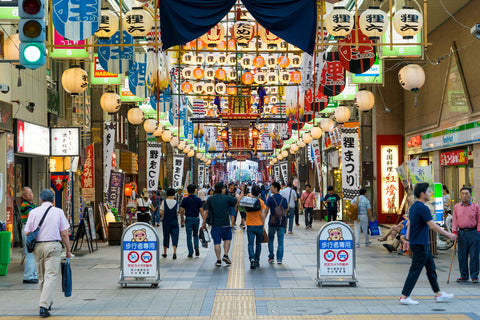
We found that many people underrate Sapporo’s value as a shopping district. Granted, it doesn’t rival Tokyo in that aspect, but Sapporo can be a decent place to shop for souvenirs and local goods. We’ll guide you through the two best shopping areas: the main area opposite Sapporo Station and the Odori area.
In the shopping area opposite Sapporo Station, you’ll find more than six shopping complexes. BicCamera on floors 1–4 of Sapporo ESTA is a great place to buy electronics. For fashion items, visit Sapporo STELLAR PLACE, Paseo, or floors 5-8 of Sapporo ESTA. Daimaru Sapporo and Tokyu Sapporo are two of our favorite department stores in the area.
In the Odori area, you’ll find lots of shopping plazas and stores. Tanukikoji Shopping Street, a favorite among foreign tourists, offers a wide variety of shops selling local goods. 4 Chrome Plaza is a nice place to buy fashion items. It’s also an easy landmark for finding the surrounding department stores, apparel shops, and dining shops.
Sapporo's Nightlife: From Jazz Bars to Beer Gardens

The city center can also serve lovers of modern nightlife. With thousands of nightclubs, bars, and restaurants, the main Sapporo attractions after sunset revolve around food and beer. Sapporo has a vibrant street food culture, which means you’ll find streets full of yatai stalls and izakayas where you can enjoy Sapporo’s signature spicy soup curry and lots of other dishes. We highly recommend an evening visit to Curb Market (Sapporo Jogai Ichiba), a hotspot with 80 restaurants and stores.
For some unique entertainment options, try Moerenuma Park or Sapporo Art Park and their wide array of illuminated artwork if you want a more tranquil experience than that of the nightclubs and bars. Alternatively, you could visit one of the many observation decks around the city, including the JR Tower and Sapporo Clock Tower, or take a ride on the NORBESA Ferris Wheel.
Outdoor Adventures: Exploring Sapporo's Natural Beauty

If you love to spend time outdoors, you’ll never run out of activities in Sapporo, thanks to the city’s rich blend of natural landscapes and man-made facilities. Hikers will be happy to know that there are about 50 trails in the city, many of which connect nearby national parks to Mount Moiwa, Mount Sapporo, and Mount Teine. Great places to begin your adventure are Maruyama Park and Asahiyama Park.
Lovers of skiing also have an abundance of world-class ski resorts, including the SAPPORO TEINE ski resort, which was one of the venues used in the 1972 Winter Olympics. Need a more relaxing outdoor activity? Visit one of the many hot springs (onsen) in Sapporo or go see the colorfully flowered landscape of the Hokkaido University Botanical Garden.
You could also visit Nopporo Forest Park or Maruyama Park, where the Hokkaido Shrine, Maruyama Zoo, and Maruyama Kid’s Land are located. If you want to learn more about the city’s history, we recommend a visit to the Former Hokkaido Government Office (Red Brick Government Building).
Cultural Festivities: Experiencing Sapporo's Rich Heritage
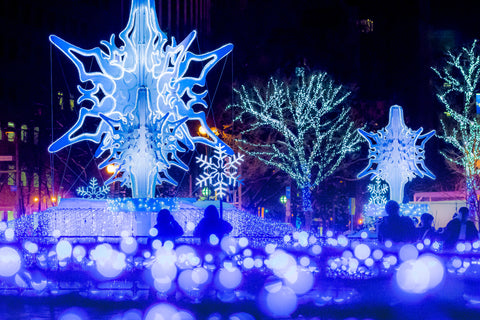
Sapporo's cultural events and festivals extend beyond the Snow Festival in February. We’ve curated a list of the best alternative festivals in the city:
-
Sapporo White Illuminations (January): An event that began in 1981 and consists of illuminated works of art displayed at Odori Park and other locations.
-
Sapporo Lilac Festival (May): A festival of flowers, live music, and wine that began in 1859. It celebrates lilac, the tree of Sapporo. There are about 400 lilac trees at Odori Park, one of the main venues.
-
YOSAKOI Soran Festival (June): A cultural display of dancing and music. The festival boasts 30,000 dancers and two million viewers.
-
Sapporo Summer and Autumn Festivals (June and September): Both festivals attract millions of visitors each year. It features fireworks, firefly hunting, and traditional dancing.
-
Christmas Market (December): A month-long event similar to the Christmas Market of Germany. It’s located at Odori Park and you can visit to buy Christmas items and German food. It tends to blend nicely with Sapporo White Illuminations.
Day Trips from Sapporo: Hokkaido's Natural Wonders

Hokkaido offers a variety of unique experiences, many of which are not too far from Sapporo. You can take day trips by train from Sapporo to nearby attractions. Our top location has to be Otaru. It’s a seaside town with deep roots in Japan’s history, accessible via the JR Hakodate Main Line from Sapporo Station (roughly an hour). The best spots to visit when you get there are Otaru Canal, Otaru Steam Clock, and Sakaimachi Street.
Our next recommendation is Noboribetsu, a place with fantastic plains and mineral-rich hot springs. From Sapporo Station, take the JR Suzuran Limited Express train to Noboribetsu Station. The journey should only take about 80 minutes. Finally, there’s Furano and its blooming flower fields, a stunning display of natural beauty.
Cultural Stays: Traditional Ryokan and Guesthouses in Sapporo
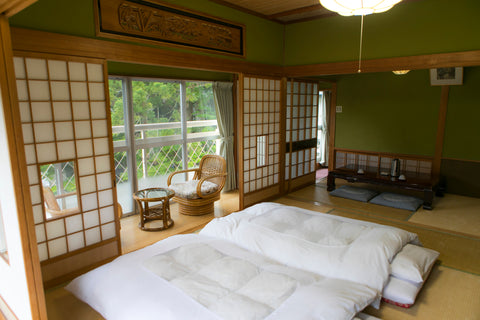
If you want to experience authentic Japanese hospitality and customs, feel free to stay in any of the traditional Japanese inns in the area known as ryokans. These facilities feature tatami-matted rooms, onsen baths, and traditional foods. Many ryokans and guesthouses are located in popular hot springs resorts like JR Tower Hotel Nikko Sapporo, Mercure Sapporo, and Mitsui Garden Hotel Sapporo.
Travel Tips: Making the Most of Your Sapporo Visit

Below is a list of practical travel tips for visitors to Sapporo:
-
Save money by getting a travel pass that allows you to move around Sapporo City for a specific number of days.
-
Wear non-slip snow shoes if you’re visiting in the winter.
-
Pack layered clothing to help with the cold.
-
Trams are the most popular means of transportation among locals.
If you can’t visit Sapporo anytime soon, you can still enjoy a taste of life in the city right away. Simply get yourself a Bokksu Snack Box subscription to receive new and authentic Japanese sweets and snacks every month, including regional specialty treats from Hokkaido.
Author Bio







 Bokksu Snack Box
Bokksu Snack Box

























